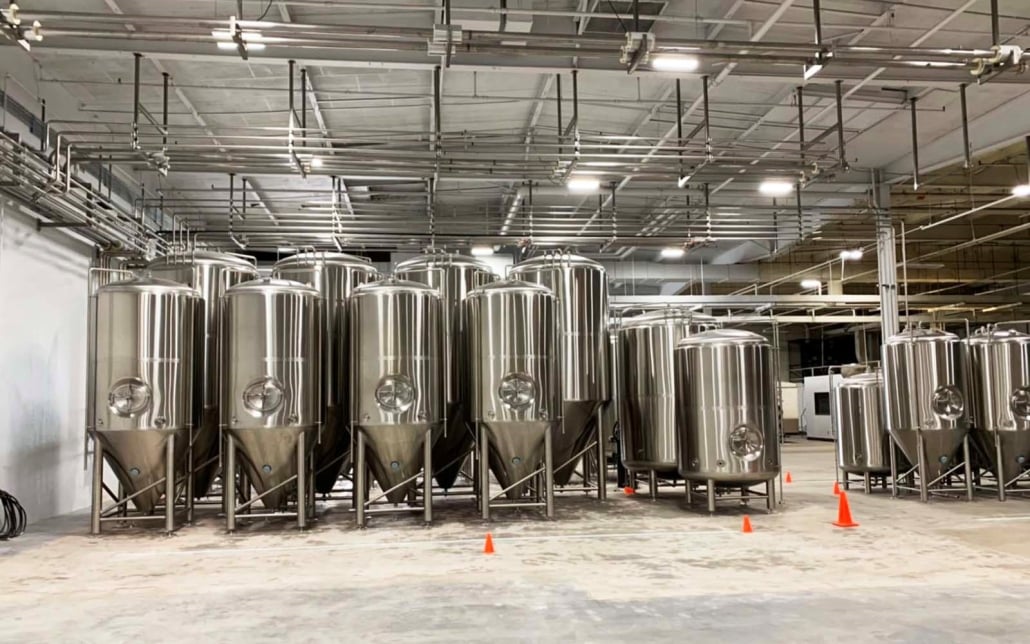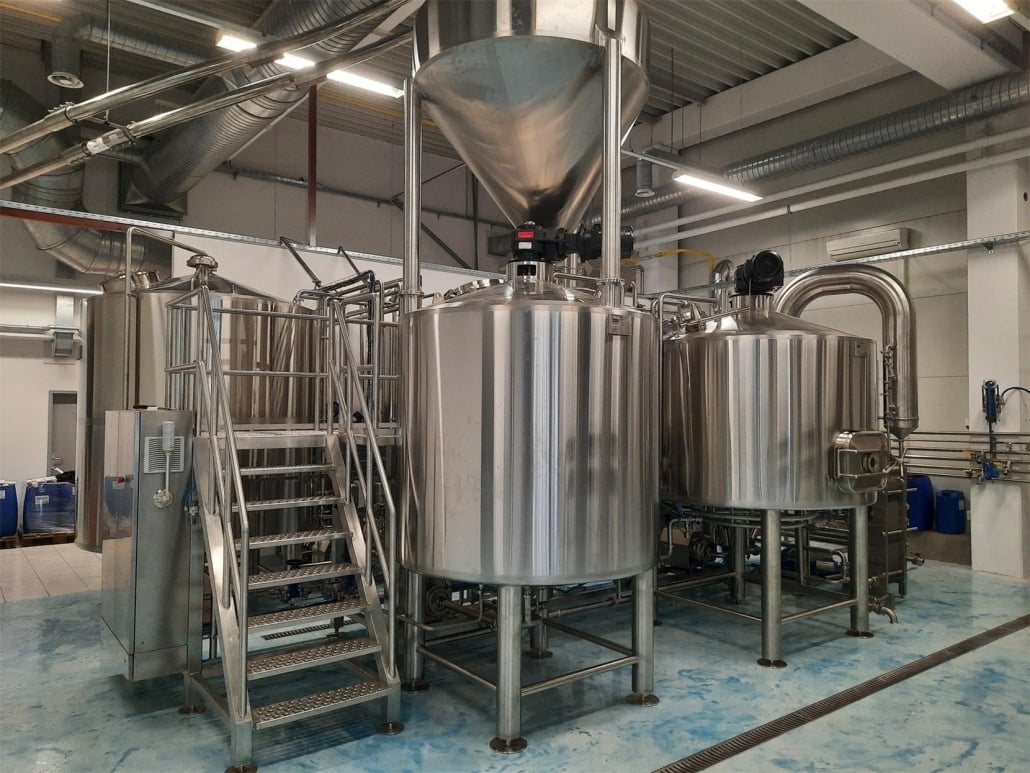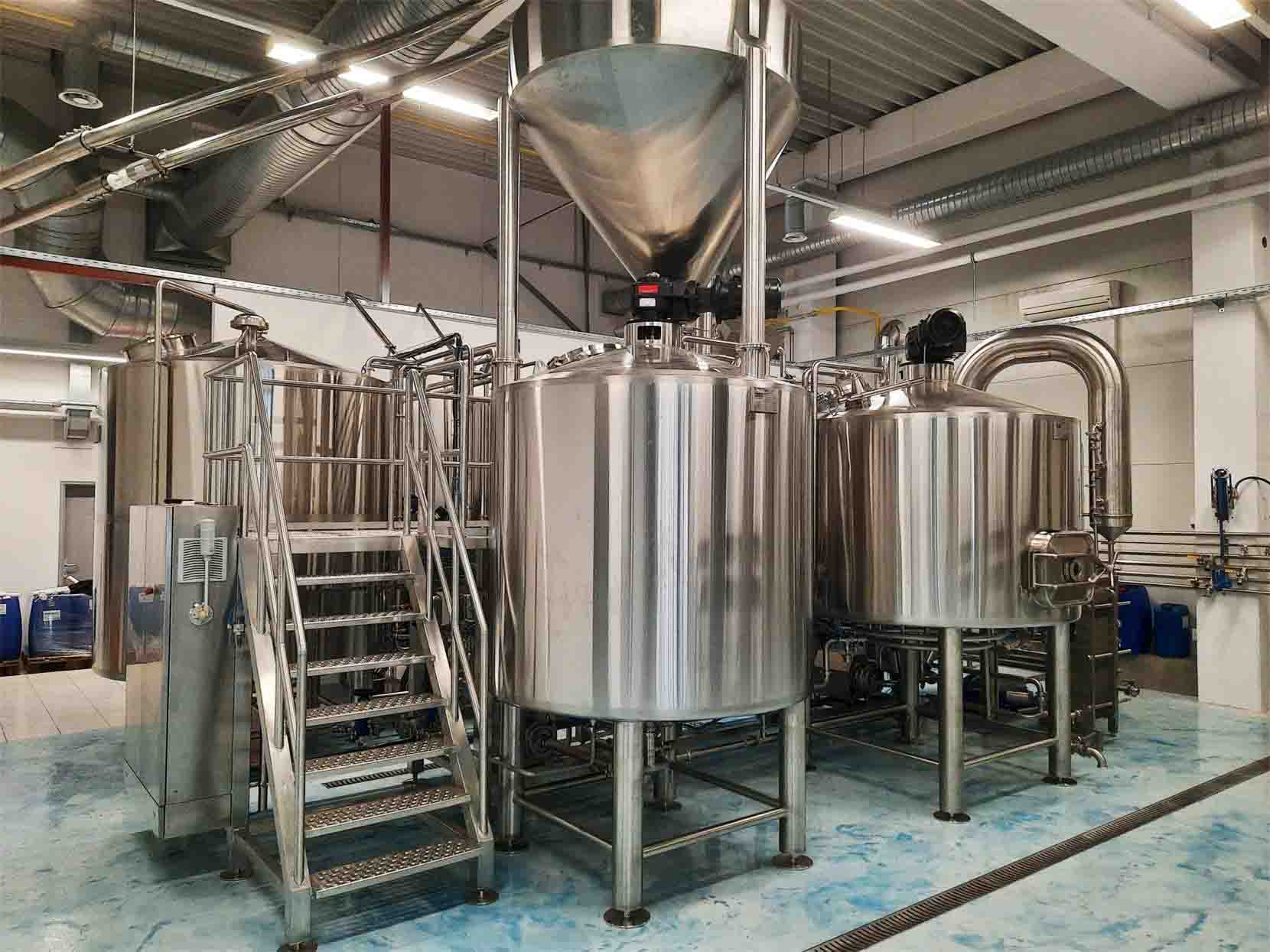1 BBL Brewing Systems
A 1 BBL brewing system brewing system is a critical piece of equipment for small to mid-size craft breweries producing 31 gallons per batch. This complete guide provides craft brewers, homebrewers, and hospitality business owners everything needed to understand 1 BBL brewing system from an unbiased perspective focused on capability analysis.
Overview of 1 BBL brewing system
A 1 barrel (BBL) brewing system produces 31 gallons per batch and is suitable for nano, micro, and brewpub operations producing up to 500 barrels annually. 1 BBL systems empower small producers to create high quality craft beer in small batches while retaining flexibility.
This guide covers key considerations when researching 1 BBL brewing systems:
- Equipment Types and Components
- Brewing Process and Batch Size
- Capacity, Dimensions, Layout, and Customization
- Suppliers and Price Range
- Installation, Operation, and Maintenance
- How to Select the Right System and Supplier
- Pros, Cons, Advantages, and Limitations
Detailed comparisons and objective recommendations are provided to help buyers make optimal equipment decisions aligned to business goals, space constraints, and budget.
An FAQ section addresses common questions on 1 BBL system selection, installation, operations, troubleshooting, upgrades, and more. Supplier references facilitate further research.

Types of 1 BBL brewing system
1 BBL brewing systems are available in manual and automated configurations from a range of suppliers. Main types include:
Table 1: Types of 1 BBL Brewing Systems
| System Type | Description |
|---|---|
| Manual | Basic manually-operated 1 BBL system without automation |
| Semi-Automated | Contains some automated features like temperature control |
| Fully Automated | Fully automated operation with programmable recipes |
| Turnkey | Comes with all equipment needed to start brewing professionally |
| Custom Fabricated | Tailor-made system designed to customer specifications |
Within these types, there is tremendous variety in terms of layout, materials, quality, features, batch frequency, and degree of customization. Objective comparison on technical specifications is advised prior to selection.
1 BBL brewing system Brewing Process
The typical professional brewing process followed on a 1 BBL system is outlined below. Actual steps may vary based on recipe, equipment capabilities, and brewer preferences:
Mashing – Mixing milled grains with hot water for starch conversion
Lautering – Separating sweet wort from spent grains
Boiling – Boiling wort with hops for aroma, flavor, bitterness
Whirlpooling – Swirling wort to remove trub and hops
Cooling – Rapidly cooling boiled wort prior to fermentation
Fermenting – Adding yeast for alcohol production
Maturing – Lagering or aging prior to packaging
Filtration – Removing yeast and particles for clarity
Carbonation – Injecting CO2 for desired carbonation levels
Packaging – Kegging, canning, or bottling final beer
Cleaning & Sanitation – Critical between batches
The degree of manual labor versus automation varies dramatically between basic, semi-automated, and fully automated 1 BBL systems. Buyers should assess where they fit on the automation spectrum based on production goals, budget, and desired ease-of-use.
1 BBL System Capacity, Dimensions, Layout, and Customization
When selecting a 1 BBL brewing system, available space in a brewery or taproom is often the limiting factor. Understanding equipment sizes, layout considerations, and customization options is critical.
Table 2: 1 BBL Brew House Specifications and Customization Options
| Parameter | Details | Customization |
|---|---|---|
| Batch Size | 31 gallons or 1 barrel | Fixed at 31 gallons |
| Physical Footprint | Varies, approx 5′ x 5′ minimum | Modular components allow extensive layout options |
| Height | 7 to 10 feet typical | Lower heights possible with compact custom designs |
| Boil Kettle Size | 40 gallons typical | Available from 30 – 50 gallons + |
| Hot Liquor Tank Size | 40 gallons typical | Available from 30 – 50 gallons + |
| Fermentation Tanks | Typically 3x 31 gallon units | Choose number and size of fermenters and brite tanks |
| Electrical Requirements | 220V, 30 amps typical | Consult experts on electrical needs |
| Grain Handling System | Various options available | Fully customize based on brewery design |
| Brew Sculpture Arrangements | Many configurations possible | Completely flexible sculpting to fit available space |
Experienced brewery design consultants can assist with specialized layouts tailored to available room dimensions, desired capacity, budget, and aesthetics. Unique 1 BBL sculpting arrangements help small producers creatively maximize limited space.
1 BBL brewing system Suppliers and Price Range
Reputable 1 BBL system suppliers offer a breadth of tiered products at different price points with varying quality and features. When comparing suppliers, verify capabilities to ensure alignment with business goals.
Table 3: 1 BBL Brewing System Suppliers and Price Ranges
| Brand & Model | Description | Price Range |
|---|---|---|
| Craftmeister Fully Automated | Fully automated, programmable tier | $100,000 to $150,000 |
| Craftmeister Semi-Automated | Partial automation with smart control | $60,000 to $100,000 |
| Craftmeister Manual | Basic manual operational tier | $30,000 to $60,000 |
| EcoBrewPro | Mid-tier semi-automated systems | $40,000 to $80,000 |
| Budget Brewhouse | Lower-end basic manual systems | $15,000 to $40,000 |
| Custom 1 BBL Fabricators | Custom systems with modular components | $50,000 to $250,000+ |
Notes:
- Prices may fluctuate based on material costs and equipment margins
- Warranties, shipping, installation, training & support vary dramatically between supplier tiers
- Cheaper systems often reflect very basic function and quality
- Custom systems allow specialized features but have higher unit costs
Thoroughly vet suppliers on reputation, service history, component quality, and consultant expertise in your region prior to purchase. Visit existing breweries using the equipment if possible.
1 BBL brewing system Installation, Operations, and Maintenance
Installing and operating a 1 BBL brewing system requires reasonable competence with commercial plumbing, electricity, welding, fabrication, logistics planning, layout design, brewing process engineering, cleaning protocols, recipe formulation, quality control, troubleshooting, and preventative maintenance.
While automated systems simplify many complex tasks, specialized skills are still needed for startup, cleaning, repairs, upgrades, and optimizing output. Carefully evaluate team capabilities during equipment selection.
Table 4: 1 BBL System Installation, Operation, Maintenance Requirements
| Activity | Details | Personnel |
|---|---|---|
| Installation | Physical setup, assembly, utilities, inspections | Contractors, electricians, technicians |
| Startup & Commissioning | Initial system check-out and operations | Commissioning engineers, external consultants |
| Cleaning & Sanitation | Critical daily/weekly operations | Trained brewers + quality control |
| Brewing Operations | Making consistent quality beer at scale | Skilled brewmaster + production team |
| Preventative Maintenance | Routine upkeep for longevity | Multi-disciplinary team + external contractors |
| Break-fix Troubleshooting | Diagnosing + resolving system failures | Experienced head brewer + technicians |
| Upgrades & Retrofits | Enhancing systems to add capabilities | Brewery consultants + specialty vendors |
| Safety Management | Compliance monitoring, training | Safety specialists + operational leadership |
As seen above, specialized personnel and partners are needed during the full equipment lifecycle. Carefully evaluate capabilities early when budgeting for a 1 BBL system. Invest in training programs, even basic ones, to build critical knowledge prior to commissioning new equipment. Thoroughly understand service and support contracts.
How to Select the Right 1 BBL brewing system
With such a wide variety of 1 BBL systems on the market from competing suppliers, the evaluation and selection process can be challenging. Use an objective methodology focused on core requirements:
Table 5: How to Choose the Right 1 BBL Brewing System
| Selection Process Steps | |
|---|---|
| 1 | Clearly define production goals and capabilities needed |
| 2 | Determine space available, delivery access, utility constraints |
| 3 | Calculate electricty loads and wastewater production |
| 4 | Shortlist equipment models that align with top priorities |
| 5 | Issue detailed RFQ to suppliers with precise specifications |
| 6 | Compare RFQ responses objectively on stated parameters |
| 7 | Ask for existing brewery references using the same equipment |
| 8 | Visit sites personally to inspect quality and talk to users |
| 9 | Validate supplier experience levels in region |
| 10 | Negotiate contract with commissioning & support specifics |
| 11 | Begin relationship with transparent communications |
By using structured competitive bidding and focusing on supplier relationships, buyers give themselves the best chance at acquiring equipment that enables their brewery vision within practical constraints.
Do not assume all systems are equivalent – extreme due diligence is required to avoid crippling disasters after purchase. This market has examples of both stellar and nightmarish supplier experiences. Protect yourself by verifying every claim.
Pros, Cons, Advantages and Limitations of 1 BBL Systems
While extremely versatile and scalable, 1 BBL brewing systems have intrinsic benefits and limitations brewers must consider before investing in the equipment.
Table 6: Pros, Cons, Advantages and Limitations of 1 BBL Brewing Systems
| Parameter | Details |
|---|---|
| Pros | Flexible production scale, small batches enable innovation & customization, localized manufacturing |
| Advantages | Lower capital investment than larger systems, taproom integration potential |
| Cons | Require significant manual labor for basic systems, limit growth capacity |
| Limitations | Space constraints in taprooms, restricted branding & visibility, maintenance challenges |
By understanding the trade-offs objectively from the start, brewers can create business models leveraging the pros while avoiding the cons through smart resource allocation and careful capacity planning.
With pragmatic operations strategy and personnel development, 1 BBL systems offer a launchpad for small entrepreneurial brewers to cost-effectively enter manufacturing while delighting patrons with unique high quality beers.

FAQ
FAQ Table 1 – 1 BBL Brewing System Installation Questions
| Question | Answer |
|---|---|
| What contractors will I need? | Specialized trades like electricians, plumbers, refrigeration technicians, millwrights. |
| What delivery logistics should I account for? | Measure all doors & corridors to plan rigging & installation. Forklifts often required. |
| Who oversees contractor coordination? | Appoint project manager to coordinate teams during commissioning. |
| When should I order fermentation tanks? | 3-6 month lead time typical – order early! |
FAQ Table 2 – 1 BBL Brewing System Operation Questions
| Question | Answer |
|---|---|
| What operational training is included? | Vet supplier training capacity – should provide multi-week brewer training programs onsite. |
| How many operators do I need per shift? | After initial training phase, target 2-3 skilled brewers needed per average production day. |
| How much beer do I need for testing? | Make large test batches & resist temptation to sell – quality acceptance essential before official launch! |
| What key metrics should I track? | Yield, rate of production, unit economics, asset utilization, maintenance cadence. |
| How do I source ingredients & verify quality? | Establish supply chain early! Audit ingredient quality continually – never compromise. |
FAQ Table 3 – 1 BBL Brewing System Maintenance & Troubleshooting Questions
| Question | Answer |
|---|---|
| What preventative maintenance is vital? | Document all PM tasks for valves, pumps, vessels, sensors, gaskets. Follow rigorously. |
| What spare parts should I stock? | Common failure items – gaskets, seals, fittings, washers, fasteners, small valves. |
| How much downtime is typical? | Schedule maintenance downtime windows proactively during low utilization periods. |
| Who do I call for support & repairs? | Ensure supplier provides emergency response capabilities as backups. |
Additional FAQs About 1 BBL Brewing Systems (2025)
1) What annual output can a 1 BBL system support?
With 2–4 turns/week over 45–48 weeks, expect 90–190 bbl/year. Throughput depends on cellar capacity (fermenters/brite), staffing, and recipe cycle times.
2) Is automation worth it at the 1 BBL scale?
Yes when labor is limited or consistency is critical. Semi-automation (temp control, pump interlocks, timers) reduces mistakes and frees operator time; full automation pays off if running frequent multi-batch weeks.
3) What utilities are non‑negotiable?
Stable power (often 240V, 30–50A), floor drains with slope, adequate potable water flow/pressure, ventilation/make‑up air for steam or direct fire, and a chiller/glycol loop sized for peak load.
4) What minimal QA kit should I budget for?
Calibrated thermometer, pH meter, hydrometer or density meter, microscope and cell count supplies, ATP swabs, and a DO meter for cold side if packaging. Add CO2 verification when kegging/canning.
5) Can a 1 BBL system support a taproom‑first model?
Yes. Many taproom‑first nanos run 1–3 BBL fermenters with frequent rotations and pilot releases. Profitability hinges on high on‑premise margins, efficient scheduling, and strict QA to avoid losses.
2025 Industry Trends for 1 BBL Brewing Systems
- Plug‑and‑play nanos: pre‑wired skid systems, quick‑connect utilities, and compact CIP carts shorten time‑to‑first‑brew.
- Connected controls: app‑enabled temp controllers and cloud batch logs improve repeatability and training.
- Low‑oxygen practices trickle down: closed transfers, CO2‑purged hop additions, and DO checks at brite/keg now common even at 1 BBL.
- Sustainability incentives: local utility rebates for heat recovery to HLT, VFD pumps, and high‑efficiency chillers reduce net capex.
- Diversified beverage programs: 1 BBL systems cross‑utilized for NA beers, hard seltzers, and RTD bases to stabilize cash flow.
Benchmarks and Adoption at the 1 BBL Scale (2024–2025)
| Metric | 2024 | 2025 (proj.) | Notes/Source |
|---|---|---|---|
| Share of 1 BBL systems sold as skid/turnkey | ~35% | ~48% | OEM catalogs; installer feedback |
| Users employing closed transfers | ~40% | ~55% | Forum polls; vendor training |
| App‑connected temp control adoption | ~38% | ~52% | Controller OEM updates |
| Typical water‑to‑beer ratio (hl/hl) | 5.0–6.0 | 4.2–5.2 | BA benchmarking; integrator data |
| Average install‑to‑first‑brew timeline | 4–6 weeks | 3–4 weeks | Field reports on modular installs |
Authoritative references:
- Brewers Association sustainability/benchmarking: https://www.brewersassociation.org/sustainability
- Master Brewers Association of the Americas (MBAA) Technical Quarterly: https://www.mbaa.com/publications/tq
- American Society of Brewing Chemists (ASBC) Methods: https://www.asbcnet.org
- U.S. DOE Better Plants (energy calculators): https://www.energy.gov/better-plants
Latest Research Cases
Case Study 1: Turnkey 1 BBL Skid Cuts Commissioning Time (2025)
Background: A startup taproom needed rapid deployment with limited trades access.
Solution: Installed a pre‑wired 1 BBL skid with integrated pumps, controllers, and quick‑connect utilities; standardized SOPs and cloud logging.
Results: First‑brew in 18 days post‑delivery; brewday labor reduced ~20%; fewer wiring/plumbing punch‑list items.
Case Study 2: Closed Transfers Improve Shelf Stability for Small Package Runs (2024)
Background: Off‑flavors appeared after 45–60 days in crowlers and small can runs.
Solution: Implemented CO2‑purged closed transfers, hop doser purging, and brite DO checks prior to packaging.
Results: Brite DO reduced from ~0.25 mg/L to ~0.10 mg/L; aroma retention extended by ~4–6 weeks; packaging loss down ~3%.
Expert Opinions
- Tom Shellhammer, Ph.D., Professor of Fermentation Science, Oregon State University
Key viewpoint: “Even at 1 BBL, oxygen control from cold side through package is the biggest lever for flavor stability—design your system and SOPs around it.” - Mary Pellettieri, QA Consultant; Author of “Quality Management for Craft Beer”
Key viewpoint: “A minimal lab—pH, gravity, micro checks, and DO—plus disciplined documentation protects quality and margins at nano scale.” - John Mallett, Author of “Malt”; former VP Operations, Bell’s Brewery
Key viewpoint: “Prioritize cleanability and temperature control. On small systems, great welds, proper CIP coverage, and precise heat management pay back every batch.”
Practical Tools and Resources
- Planning/licensing
- TTB Permits Online: https://www.ttb.gov/beer/permits
- SBA startup financial templates: https://www.sba.gov
- Technical standards and QA
- ASBC Methods: https://www.asbcnet.org
- MBAA Best Practices/TQ: https://www.mbaa.com
- Sustainability and utilities
- Brewers Association calculators/guides: https://www.brewersassociation.org/sustainability
- DOE Better Plants tools (motors/steam/chillers): https://www.energy.gov/better-plants
- Procurement and community
- ProBrewer forums/classifieds: https://www.probrewer.com
- BrewBids marketplace: https://brewbids.com
- Process and logging
- Brewfather (batch/fermentation tracking): https://brewfather.app
- BeerSmith (recipes/records): https://beersmith.com
Last updated: 2025-09-30
Changelog: Added 5 focused FAQs, 2025 trend/benchmark table for 1 BBL Brewing Systems, two concise case studies, expert viewpoints, and curated tools/resources highlighting closed transfers, modular installs, and QA essentials.
Next review date & triggers: 2026-03-31 or earlier if BA updates nano-scale benchmarks, major controller integrations launch, or new utility rebate programs impact 1 BBL system ROI.
Share this entry
Interested in learning more about Brewing Systems including additional details and pricing information? Please use the form below to contact us!
YOLONG BREWERY EQUIPMENT FAQS
- Commercial Brewery / Craft Brewery / Microbrewery / Nanobrewery
- What is The Difference Between Craft Beer and Industrial Beer?
- The Bespoke Differences In Custom Brewing Systems
- Everything You Need to Know About Kettle Souring
- How to Choose Brewing Equipment for Your business?
- How To Choose The-Best Partner To Build Your Commercial Microbrewing System?
- Two Detection Sensors That You Need To Use In Your Brewhouse System
- Remote Control Applications in Brewing Equipment/How does it work?
- How To Clean Your Brand New Brewery Tanks?

